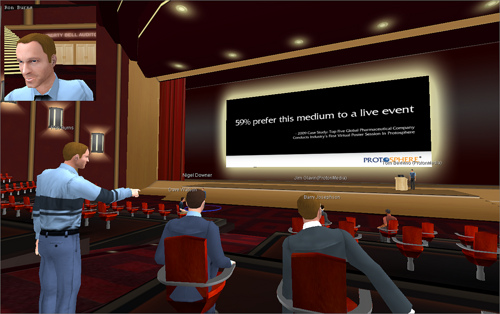Like many aspects of life sciences today, speaker programs are being cut due to budgetary constraints and the tightening regulatory landscape.
I read a recent article by Bill Cooney in PharmaExec that highlighted this trend, reporting that speaker program activity is down 30 percent or more at most pharmaceutical companies.
Many of the figures and trends that Bill reports align with what we’re seeing among the life sciences companies we work with. Travel and logistics costs for remote speaker events are a major area of spend that companies are taking a big ax to.
Access to subject matter experts for in-person events is also becoming increasingly difficult due to new regulations that curtail potential for conflicts of interest between doctors and pharmaceutical companies.
For instance, states such as Massachusetts and Vermont ban medical device companies from giving physicians most gifts, including compensation for their travel, lodging, and meals. And if the pending Physician Payment Sunshine Act (PPSA) is passed, it would require medical product companies in all states to report physician payments and gifts worth more than $10.
These factors are driving some life sciences companies to hold speaker programs virtually. It can significantly reduce or eliminate travel costs, and it can be inherently compliant with transfer of value regulations, such as compensation for meals.

In his article, Bill discusses some ways for making virtual speaker programs work. He highlights the importance of sharing content that addresses evidence-based medicine and other clinical topics, and having strong sales force support.
I agree with Bill’s advice. We’re seeing similar takeaways among the life sciences companies we’re working with. I’d encourage you to flip over to Bill’s article for his details on these points.
We’re also seeing a few other best practices emerging among our customers in this arena that I thought would be great to share. Here are some things they’ve told us have contributed to making their virtual speaker programs work:
Use a platform that supports high interactivity and engagement. You could say I’m biased because I am with a technology vendor. However, I’m mentioning this point not to plug our product, but because it’s something we’ve heard from many of our customers. The technology decision is crucial to successful virtual speaker programs. Our customers have found it’s important to use a technology that’s not too complicated, and that provides a high level of interactivity and engagement. This helps foster adoption of the platform, and enables them to meet their objectives of improved knowledge sharing and knowledge retention.
Hold internal sales meetings in the platform. One of the best ways to teach your sales force how to use the new technology is to hold internal meetings in the same platform you’re holding outbound KOL and SME activities. This helps the sales team become very familiar with the tool for their own training and internal communications, so they are knowledgeable of the platform when they use it with their customers.
Integrate virtual activities into a holistic events program. We’re seeing our customers build integrated events programs comprised of both virtual and in-person events, depending on their business need and the task at hand. For instance, some are finding their virtual environment works well for quick product updates and other more frequent touches. From a time and cost perspective, it’s a no-brainer to get 12, 15, or 20 people together in a virtual space for an interactive training update or survey, as opposed to making plans to fly them to a remote location, coordinating their schedules, booking flights/hotels, etc.
Bring organizational knowledge into the environment. Our customers are integrating content, most notably SharePoint resources, into their virtual environment. SharePoint is becoming the standard for document management in life sciences, if it hasn’t already. Sharing and collaborating on these resources is a crucial part of KOL and SME programs, making it an imperative to have them available in their virtual workplace.
Measure results and make adjustments. Our customers are showing a high level of interest in surveying to understand what worked and what didn’t with their virtual speaker program approaches. We’re seeing more customers use the polling function in ProtoSphere, which can be customized with a series of questions to gather information on user experience and feedback. This information is crucial to improving their virtual speaker programs.
These are the some of the common pieces of feedback we’re hearing from our customers. If you’ve participated in a virtual speaker program, what have you found to work and not work? Anything you’d recommend?
(This column reprinted with permission from ProtonMedia.)
- How to make virtual speaker programs work - November 30, 2010
